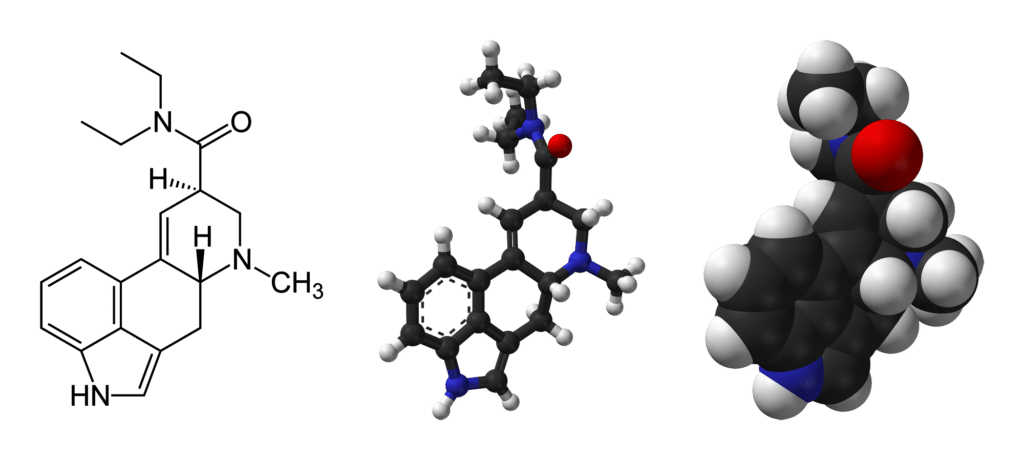What is Holotropic Breathwork:
13 Important Questions Answered
CONTENTS
People who are new to the subject usually have many urgent questions such as how to do Holotropic Breathwork or exactly what is Holotropic Breathwork. Some of these questions keep being asked over and over again, so they appear to be of particular relevance to the curious newbie. Analogously to these recurring questions, there are also certain answers that have been offered time and time again by teachers and seasoned practitioners. Let’s take a look at 13 of these questions as they are answered in the spirit of this tradition.
Answers by Roman Petrov, certified Holotropic Breathwork practitioner.
Holotropic Breathwork is a powerful experiential approach to self-exploration and spiritual empowerment that relies on our innate wisdom and its capacity to move us toward positive transformation and wholeness. Its theoretical framework integrates insights from modern consciousness research, anthropology, psychology, psychiatry, Eastern spiritual systems, and mystical traditions of the world. The term “holotropic” means “moving toward wholeness” (from the Greek holos — whole, and trepein — move toward).
Holotropic Breathwork might be of interest to you if:
● you are seeking a more experiential approach to healing, one that goes beyond talk therapy
● you are experiencing a major life crisis and seeking deep wisdom and insights
● you want to release unresolved issues from the past
● you want to understand the emotional roots of a persistent physical/psychosomatic condition
● you are yearning for deeper insight into the nature of reality and advancement on your spiritual path
● you want to facilitate the integration of a difficult psychedelic session
● you want to find an authentic creative impulse and nurture artistic inspiration
● you have a feeling of an uninterestingly lived life
Holotropic Breathwork is an entirely safe method, provided that certain standards and conditions are met (this includes ruling out medical contraindications). The easiest, safest and recommended way of ensuring that the required conditions are met is by choosing a facilitator (facilitators) who has completed the Grof Transpersonal Training program, and who subsequently has been granted a GTT certificate.
Beginning from 2017, the Grof Transpersonal Training organization requires its graduates in addition to complete a certain amount of personal psychological and spiritual work every year (including two Holotropic Breathwork experiential sessions), plus every three years to participate in a core GTT event, led by GTT principal staff, in order to check in with their senior teachers and realign their practice with the community standards. This is called the Continuing Professional Development (CPD) program at GTT. You are actively encouraged to check a facilitator’s CPD status and certification, before you attend a Holotropic Breathwork session with him/her/them.
A continually updated, complete and searchable list of all GTT certified facilitators can be found on the Grof Transpersonal Training website - www.holotropic.com.
Holotropic Breathwork® was developed during the ‘70s and ‘80s at the Esalen Institute in Big Sur, California. Subsequently, in 1989, Grof Transpersonal Training was founded. During the approx. 40 years of its existence, many thousands, indeed tens of thousands of people, have undergone the experience of Holotropic Breathwork, in the form that it is being taught at GTT. Many people have participated in 50 or more sessions during their lifetimes. To the present day, there are no known casualties associated with the practice of Holotropic Breathwork.[1]
This is a super common question, and whenever there is a group of newbies to Holotropic Breathwork, you can be certain somebody will come up with it. The answer is: No, you can’t do Holotropic Breathwork on your own. Here’s why:
Holotropic Breathwork is a composite technique. This means that, in order for Holotropic Breathwork actually to occur, a number of specific conditions have to be met, and a number of components have to come together functionally. So, for example, in Holotropic Breathwork we have the element of sitters and breathers working together, or the element of the sharing circle, where people share their experience while others listen, and vice versa. Another crucial element of the technique is a protected, supportive and caring environment, which has to be actively sustained during the entire workshop by trained facilitators.
Then there is the theoretical element of the workshop, which takes the form of a lecture and/or a discussion session, where we learn about new ways to conceptualize our holotropic processes and to integrate them into our daily lives. Another vital component of Holotropic Breathwork is bodywork, or, more precisely, “focused energy release work”, which is something participants can only do together with trained facilitators. At other times, we may find ourselves in a difficult place during our holotropic experience, and the mere presence of, or a word of reassurance and/or encouragement from an experienced facilitator can often work wonders to assist us to overcome the challenge successfully. And the list goes on …
So, as you can see, there are plenty of reasons why trying to do Holotropic Breathwork at home alone can never produce the same results as doing it in its proper context and with trained facilitators.
No, there is only one Holotropic Breathwork.
There are, however, different kinds of breathwork. You may have heard of Conscious Breathwork, Transformational Breathwork, Maitri Breathwork, Psychedelic Breathwork, Breathwork for Mental Health, Breathwork Meditation, Rebirthing Breathwork, Neurodynamic Breathwork, etc. – you name it …
Breathwork can potentially have a non-trivial impact on your mental and physical wellbeing. So if you intend to engage in some form of it, it is important to realize that different kinds of breathwork may yield significantly different results. This is why you always want to know exactly what kind of breathwork you are dealing with, and what the results are that you may expect if you choose to engage in the practice of it.
“Holotropic Breathwork” is an internationally registered trademark. Only certified graduates of Grof Transpersonal Training are authorized to use it for their practice. The history, technique, and benefits of the method are well documented. If you wish to learn more about Holotropic Breathwork, then this website will make a good starting point.
Yes, Holotropic Breathwork can produce real and lasting changes in one’s life.
Naturally, the results will tend to be different for someone who is engaging in the practice systematically over a prolonged period of time, and for someone who only tries the method once or twice.
Holotropic Breathwork enables people to open up experientially to aspects of themselves that are normally hidden in their unconscious mind. If this is done with adequate care and occurs within the right context, extraordinarily wholesome results can be attained. In Depth Psychology, it is well understood that bringing these hidden aspects of our psyche to conscious awareness, while subsequently carefully integrating them into our conscious self-identity, results in healing and functional expansion. The more comprehensive and well-integrated our self becomes, the richer, healthier and more fulfilling a life we may enjoy.[2]
Individual sessions are possible, and although they are quite rare, in certain cases there may be good reasons to do Holotropic Breathwork in an individual setting.
It is natural to feel a little shy, especially before having one’s first experience with Holotropic Breathwork in a group setting. After all, entering a non-ordinary state of consciousness involves letting go of control to a substantial degree, and that means we are going to render ourselves potentially vulnerable. Therefore, a certain degree of shyness and caution is quite appropriate. It is also true, however, that those who initially express hesitation to participate in a group setting, and subsequently do so, are practically without exception relieved and pleasantly surprised by the experience.
Do you know that there are many wonderful things to enjoy in a group setting? In a group, you get the opportunity to experience both the roles of the breather, and the sitter. This is very valuable, as the experience of “sitting” for another person powerfully enhances the holotropic process. The workshop is a social event as well. Mutual interaction with others has a great potential to enrich our experience in many important ways. In a larger sharing circle, we get plenty of opportunity for insight into the nature of the transformative process, simply by listening to others. We may get valuable feedback and perhaps even form new, authentic friendships.
Moreover, and perhaps a little counterintuitively, even for the naturally shy person, the group setting turns out to be mostly more favorable than an individual session would be. This is because when everyone in the group goes into the expanded state together, it usually makes one less self-conscious than being alone, with only one, or two other people present in the room, who, at that, are in their normal, waking state.
So, at GTT, we generally wholeheartedly recommend doing Holotropic Breathwork in a group setting. If there’s a specific reason not to, an individual session can be arranged.
No, bodywork or any other kind of physical contact is not mandatory during Holotropic Breathwork.
At a Holotropic Breathwork workshop, everything is based on informed consent and mutual agreement. [3] Bodywork in the context of Holotropic Breathwork (focused energy-release work), follows two basic principles: 1) it is initiated by the breather, and 2) it is done by the breather and facilitator together. In focused energy-release work, the breather is the leader!
Every Holotropic Breathwork workshop includes a theoretical lecture, preceding the experiential part. During that lecture, the basic principles and potential benefits of bodywork will be explained in detail while accompanied by practical examples. There will always be space for questions that may arise during the lecture, or at any other suitable time during the workshop.
Based on their personal experience and theoretical understanding, every participant decides whether or not he/she wishes to make use of bodywork on a particular occasion.
Holotropic Breathwork can be beneficial to many people who don’t feel entirely physically or mentally fit. That being said, it is also true that Holotropic Breathwork is not for everyone.
If you know that you have a physical or mental condition, and you would like to give Holotropic Breathwork a try, don’t hesitate to seek out a qualified facilitator, and ask him or her for a consultation. Professional Holotropic Breathwork facilitators are trained to determine whether the method is suitable for you, and they have a number of tools available to that end. In some cases, a cross-consultation with your physician or psychotherapist may be requested.
It may be, depending on your temperament, and the origin of your condition.
In holotropic therapy,[4] healing occurs as a result of a process that starts with allowing ourselves to dive into parts of our psyche that are normally unconscious. When we do that – with the help of a safe and effective technique like Holotropic Breathwork – sooner or later we have the opportunity to get in touch with the root causes of our problematic psychological states, including depression, anxiety, phobias and panic attacks. Naturally, this will be challenging to some degree, but so is living with the symptoms on a long-term basis. Besides, merely withstanding these symptoms long-term will rarely lead to overcoming them.
By bringing these hidden, even if difficult contents to conscious awareness in the holotropic process, while subsequently properly integrating them, we can gradually transform ourselves, so that they no longer cause difficulties in our daily life. It is advisable to work simultaneously with a Psychotherapist, as this can powerfully enhance the very important integration process. There are few approaches as effective as systematically combining experiential Depth Therapy (like Holotropic Breathwork) with verbal, analytic Psychotherapy.[5]
If you are taking prescription medication to help with your symptoms of depression, anxiety, phobia or panic attacks, you must inform your facilitator about this fact.
Yes and no. Holotropic Breathwork should not be seen as a primary remedy for physical disease. It is advisable always to treat physical disease primarily in the context of a dedicated medical system.
That said, it is not uncommon for Holotropic Breathwork to result in overcoming psychogenic[6] illness or chronic pain. Sometimes this can also be the case in situations where a conventional medical approach has persistently failed to yield satisfactory results.
Always work together with a qualified facilitator and your physician when attempting to determine if Holotropic Breathwork could be helpful in overcoming a physical condition.
It is similar in some aspects. Both LSD and Holotropic Breathwork enable us to become consciously aware of the contents of our psyche that are normally not available to be experienced directly. LSD, however, can have potentially much more powerful effects – the experience typically lasts about 3-4 times as long, and with high (psychedelic) doses, it can result in very radical effects. In this respect, Holotropic Breathwork is usually seen as a more gentle and practical approach, as the effects are generally not as overwhelming, and the integration process smoother and well manageable.
Another important difference lies in the fact that in Holotropic Breathwork, one can regulate the progression of the experience simply by increasing/decreasing the intensity of breathing. With a psychedelic substance like LSD, the intensity of the experience will primarily be determined by the dose taken, since regulating it afterwards is not all that easy. Once you’ve ingested your dose, you’ll have to find your way through the entire experience somehow, even if it gets too much for you at some point.
Holotropic Breathwork also commonly gets quite physical – a lot of bodily movement and vigorous physical action is often involved. Changes in visual perception do not occur as often or are not as marked as with LSD. Emotions, on the other hand, can be manifested very powerfully during Holotropic Breathwork.
Yes, Holotropic Breathwork can often help in this situation.
When we go through a difficult psychedelic experience, especially one that has caught us by surprise, it can be quite a shock. After struggling our way through such an experience, sometimes we can remain stuck with negative symptoms, such as emotional flashbacks occurring at random times during the day, nightmares or difficulty in falling asleep, heightened anxiety, mood disturbances, obsessive thoughts, or even physical pain, muscle tensions or tremors, digestive problems, or other, more or less serious problems.
It is understandable that, under such circumstances, usually the last thing we would wish for is to go through that experience once again. However, it may be necessary to go back to the non-ordinary state of consciousness, in order to effectively resolve the cause of the persisting symptoms.
When in this situation, it is crucial to understand what happened, why the symptoms are not fading away, and what can be done to resolve the problems that result from the traumatic psychedelic experience. Holotropic Breathwork is usually a viable choice when trying to deal with this type of difficulty. So, if you need help, seek out a certified facilitator and request a consultation.
Yes, it can. Holotropic Breathwork has helped many people who were trying to overcome their dependence on alcohol and/or other addictive drugs.
That said, it is important to realize that substance addictions are a rather hard nut to crack. To uproot an active addiction to drugs the likes of alcohol, cocaine, methamphetamine or heroin, extraordinary efforts and determination on the side of the addicted person are required. Holotropic Breathwork alone, even if done systematically, will not be sufficient. In fact, a drug addiction in its active stage is contraindicated for Holotropic Breathwork, as the effects of these substances directly clash with the healing mechanisms involved in the method.
For serious addictions, the best bet is probably to undergo systematic, specialized treatment. Once the therapy proceeds to the stage where the person is not actively using the substance anymore, Holotropic Breathwork may be introduced as an additional means of undercutting any remaining ties to the old, self-destructive habits, and to help establish new meaning and purpose in the life of the recovering person.
Are you interested in questions like “What is Holotropic Breathwork?” or “How to do Holotropic Breathwork”? Then you’ve come to the right place. The article above offers 13 questions and answers that might be just for you.



